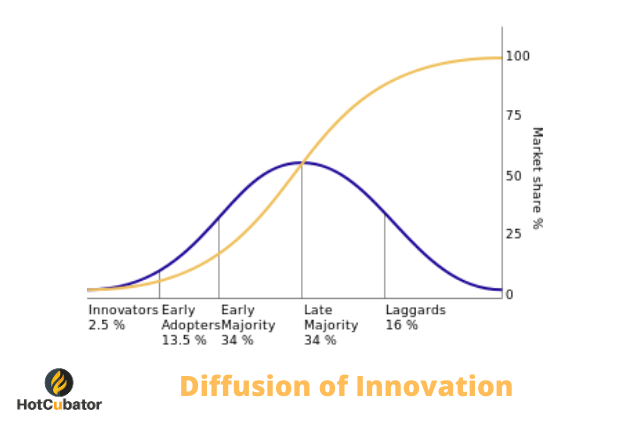
There is no denial that innovation is more than a buzzword today. Survival in the fiercely competitive business world rely only how successful an organisation can emerge as an innovative brand in the marketplace. To understand how, why, and the rate at which an innovative product, service, or process spreads through market segment, a seminal theory – Diffusion of Innovation was popularised by American communication theorist and sociologist Everett Rogers in 1962. The diffusion of innovation theory is used extensively by entrepreneurs, thought leaders and marketers to understand the rate at which consumers are likely to adopt a new product or service.
The cumulative adoption of innovation over time generally follows an S-shaped curve as the product moves through its life cycle. Rogers classified consumers, based on their demographic and psychographic features, into the following five segments –
Consumers who are first to try new products are known as Innovators. Then comes the Early adopters, consumers who are interested in trying new technologies and establishing their utility in society. Early majority represents a group of customers from among the general population. The early majority paves the way for use of an innovation within mainstream society and are part of the general population. The late majority is also part of the general population and refers to the set of consumers who follow the early majority into adopting an innovation as part of their daily life. Lastly, comes the Laggards – the risk-averse communities who generally are unlikely to try new things. They only become compelled to use new technologies due to societal pressure.
Rogers further suggests that there are four main elements which influence the spread of a new idea or innovation itself, communication channels, time, and a social system. This process relies heavily on human capital. The innovation must be widely adopted in order to self-sustain. Within the rate of adoption, there is a point at which an innovation reaches to the critical mass segment of consumers.


